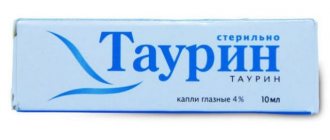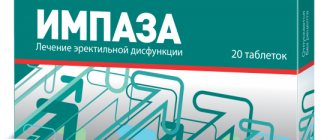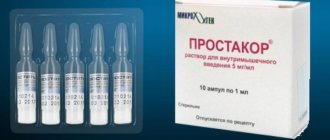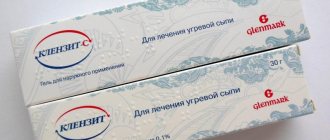Contraindications
- Hypersensitivity to the components of the drug Senade,
- spastic constipation,
- intestinal obstruction,
- abdominal pain of unknown origin,
- strangulated hernia,
- acute inflammatory diseases of the abdominal cavity,
- peritonitis,
- gastrointestinal and uterine bleeding,
- cystitis,
- disturbances of water and electrolyte metabolism.
With caution: prescribed for liver and/or kidney diseases, as well as during pregnancy and lactation, in conditions after abdominal surgery, as well as in children (up to 6 years) based on the dosage regimen.
Side effects and possible complications
As a rule, with a one-time use of Senade at a normal dosage, severe pain, deterioration in well-being and health problems do not occur. In rare cases (usually characteristic of long-term use of the drug and exceeding the prescribed dosage), the following complications are likely:
- Increased gas formation and, as a result, intestinal colic, flatulence, bloating,
- Diarrhea (usually ends with the effect of the medication),
- Nausea and vomiting (extremely rare),
- Allergic reactions associated with hypersensitivity to the composition,
- Abdominal and stomach pain,
- Albuminuria, change in urine color,
- Skin rashes,
- Dehydration, electrolyte imbalance (with long-term use),
- Vascular collapse
- Dizziness (most often associated with increased peristalsis).
When Senade is used simultaneously with drugs for the treatment of heart pathologies, the effect of the latter is likely to increase. It is also possible to develop potassium deficiency in the body and hypokalemia. You should not combine laxatives with diuretics, other laxatives and diuretics, since in this case the risk of dehydration and potassium deficiency in the body increases.
Senade: instructions for use
Senade is usually taken orally once a day in the evening before bed, with water or some other drink.
Adults and children over 12 years of age: 1 tablet per dose. If there is no effect, the dose can be increased to 2-3 tablets.
Children 6-12 years old: 1/2 tablet and, if necessary, increase the dose to 1-2 tablets.
During the selection process, the same dose should be taken for several days and gradually increased by 1/2 tablet. If, after reaching the maximum dose, bowel movements do not occur within 3 days, you should consult a doctor.
Contraindications for use
Senade cannot be treated if the following prohibitions exist:
- Spastic constipation caused by the tone of the intestinal walls.
- Organ obstruction.
- Gastrointestinal or uterine bleeding.
- Strangulated hernia.
- Peritonitis.
- Acute intestinal inflammation.
- Unexplained abdominal pain.
- Open ulcer. It is advisable to undergo an ultrasound to make sure there is no perforation.
- Cystitis.
- Intolerance to components.
- Lactation.
Prescribed with caution if the patient has recently had surgery and has liver and kidney pathologies.
Senade's ingredients can pass into milk, so it is recommended during breastfeeding if the danger to the mother outweighs the risks to the baby.
Obese people sometimes use Senade for weight loss. But weight loss requires a long course, which is strictly prohibited in the case of using herbal remedies. Loss of body weight occurs as a result of dehydration, which is life-threatening. In addition, after stopping the intake, the volumes will return.
It is forbidden to combine with alcohol. Alcoholic drinks make dehydration severe.
Laxative Senade
According to the pharmacological classification, the drug belongs to the group of laxatives. Senade - instructions for use state that the active ingredients of the drug are sennosides of groups A and B. The drug is used to treat constipation of hypo- and atonic origin, hemorrhoids, fissures and fistulas of the anus, rectum, proctitis. The medicine is available only in tablet form.
Composition and release form
Senade tablets have a flat, round shape with beveled edges and are brown with speckles. The word CIPLA is embossed on one side, and there is a break mark on the other. Available in blisters and cardboard packs of 40, 60 and 500 pieces. One tablet contains 93.3 mg of senna leaf extract, calcium salts of sennosides A and B (13.5 mg in terms of sennoside B). Excipients are:
- lactose – 23.07 mg;
- starch – 43.56 mg;
- methyl parahydroxybenzoate – 0.04 mg;
- microcrystalline cellulose – 15 mg;
- talc – 11.13 mg;
- Magnesium stearate – 0.93 mg;
- sodium lauryl sulfate – 0.93 mg;
- carmellose sodium – 2 mg.
pharmachologic effect
Senade - instructions for its use indicate a laxative effect that occurs approximately 8-10 hours after administration. This effect is due to the effect of the active substances of the drug on the receptors of the large intestine, which enhance tract peristalsis. Plant raw materials - anthraglycosides from the leaves of senna (cassia) acute and angustifolia reflexively enhance the functioning of the mucous membrane, restoring the normal functioning of the intestine.
According to reviews, the herbal drug is not addictive and does not affect digestion. While taking it, the condition of the stool does not change - bowel movements are normal, formed stools without diarrhea. The tablets have a selective effect on the colon, which plays an important role in the process of bowel movements. Stopping the medication does not lead to severe constipation.
Indications for use
Instructions for use of Senade indicate the following indications for which it can be used:
- hypotension;
- sluggish peristalsis of the large intestine due to diet;
- functional constipation, associated with ignoring the urge to defecate and the inability to go to the toilet;
- the need to regulate stool for hemorrhoids, proctitis, anal fissures, obesity.
Tablets "Senade" - price
The Senade package contains 25 blisters of 20 tablets each, that is, 500 tablets in total. It’s unlikely that anyone will need that much at once, but pharmacies usually divide the drug and dispense it freely in strips. The cost of a full pack of Senade is about 600 rubles (data as of April 2020). The blister will cost no more than 25 rubles, and it will be enough to solve the problem of situational constipation.
For the information of consumers - if the pharmacy claims that drugs are dispensed only in full packages, you can safely defend your right to purchase the medicine in part (although not in all cases).
According to clause 8 of Section I of Order No. 403n “On the rules for the dispensing of medicinal products for medical use”, if the quantity of the drug required by the person purchasing it (for over-the-counter dispensing!) is less than the quantity contained in the secondary packaging (meaning the box), then it is allowed dispensing medicine in primary packaging (blister, sachet). That is, the buyer has the right to demand that he be given one blister of Senade tablets or, for example, one cold powder like Teraflu or Coldrex.
When sold in primary packaging, the buyer must be provided with instructions or a copy thereof. In the case of “Senade”, the manufacturer took care of this - 25 copies of instructions are included in the pack, so instructions for use can be given with each blister.
Tampering with the original packaging is prohibited, so you should not require the pharmacist to cut off and sell one tablet from the blister.
In the case of prescription drugs, the rule applies only when specific information is written down in the prescription. For example, there are 20 tablets in a drug package, but 10 are written in the prescription - only then should the pharmacy sell the specified quantity. If the prescription is written for an amount equal to a full package, it is useless to demand a “test plate” - the pharmacy can, but is not obligated to, accommodate halfway in this matter.
It is worth noting that all injection drugs in Russia, even the simplest saline solution, are actually prescription drugs. Strict compliance is a different matter. However, in the case of ampoules, the same principle applies - the packaging will be divided only if this is indicated in the recipe.
This order does not apply to dietary supplements and medical products - their distribution is regulated by other regulations.
Analogues of "Senade"
In composition, an identical substitute for the Indian “Senade” will be the domestic “Senadexin”. Since they are equivalent in cost, this will be a replacement from the category of “waste for soap”.
Bisacodyl can be called a similar effect. It has a different composition, but the same effect. It costs a little more than Senade. May cause a more violent reaction from the intestines - spasms, flatulence, seething.
Preparations based on sodium picosulfate will also have a similar effect: “Guttalax”, “Slabilen”, “Guttasil”, “Regulax Picosulfate” and others. Representatives of this synonymous series, even domestic ones, are several times more expensive than Senada.
For those who like to prepare herbal decoctions, we can mention medicinal plant materials - senna leaf or buckthorn bark. If we ignore the need to fuss with preparation, the effect of their use is comparable to the tablet form.
Post Views: 1,301
Side effects
The use of the drug Senade leads to side effects, especially with prolonged use, from:
Digestive system:
- feeling of nausea;
- diarrhea;
- vomit;
- colicky abdominal pain;
- flatulence;
- deposition of melanin directly in the intestinal mucosa.
Metabolism:
- disorder of water-electrolyte metabolism.
Urinary system:
- hematuria;
- albuminuria;
- discoloration of urine.
CNS:
- confusion;
- fatigue;
- convulsions.
Dermatological reactions:
- skin rash.
SSS:
- vascular collapse.
Composition and release form
The drug Senade is available in tablet form for oral (oral) use. They have a dark brown color and a flat-cylindrical round shape. The main active ingredient of the drug is senna leaf extract; its content in 1 tablet is 93.3 mg. The drug also contains auxiliary components, which include:
- Methyl parahydroxybenzoate.
- Magnesium stearate.
- Starch.
- Microcrystalline cellulose.
- Lactose.
- Carmellose sodium.
- Talc.
- Sodium lauryl sulfate.
Senade tablets are packaged in blister packs of 20 pieces. A cardboard pack contains 2, 3 or 25 blisters of tablets, as well as instructions for use of the drug.







